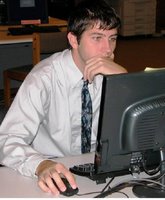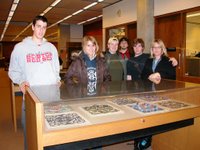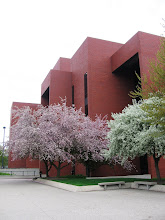Improved Technology for Students, Faculty, Staff
 Shortly before the beginning of Fall Semester 2006, the University Libraries began to replace 120 of the 345 public PCs with new units. The workstations that were replaced are located on the first floor of Bracken Library and in the Architecture and Science Health Science Libraries. These new units are faster, offering more virtual memory and a faster clock speed.
Shortly before the beginning of Fall Semester 2006, the University Libraries began to replace 120 of the 345 public PCs with new units. The workstations that were replaced are located on the first floor of Bracken Library and in the Architecture and Science Health Science Libraries. These new units are faster, offering more virtual memory and a faster clock speed.The PCs that were replaced are being deployed to the second, third, and fourth floors to replace PCs that are less powerful. The result is that the University Libraries can now offer more software options and faster computers for students and other customers who are using these technology assets.
The following programs are now available in these locations: AutoCAD2007, Studio 8, and the Adobe Creative Suite CS2 package.
Because of recent infrastructure upgrades, all of the University Libraries’ public PCs are now connected to the Ethernet, rather than wireless. Through hardwire connections, customers will find improved network connectivity providing for moving large files and rich media between the client computer and network resources. This is especially important for access to streaming and other assets on the Internet that are easier to access because of the recent increases to 245 megabits of Internet bandwidth available to on-campus computers.
Find It @ BSU Services Continues to Grow
Several noteworthy enhancements have been applied to the Find It @ BSU service from the University Libraries. In October, 4,400 full-text resources from the University libraries subscription to Lexis/Nexis database were added to the Find It @ BSU service. Among the valuable content in Lexis/Nexis is the full-text of The New York Times. Many other electronic resources cite The New York Times, but few include the full-text.





